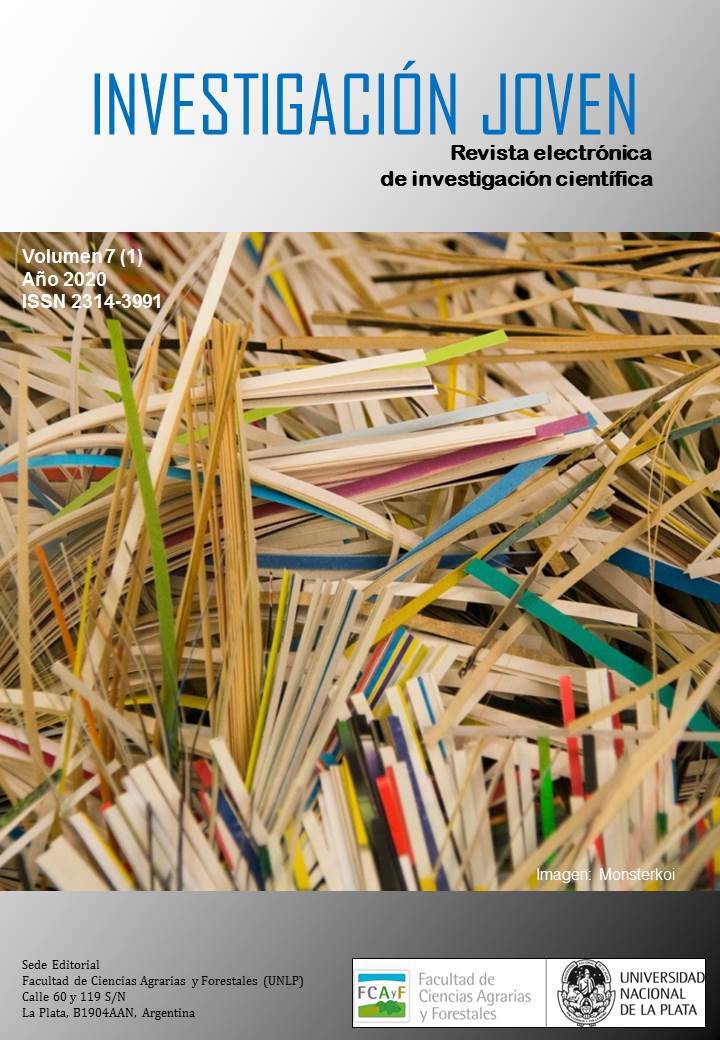ENVIRONMENTAL-FRIENDLY SYNTHESIS OF FLAVONE AND ITS EFFECT ON LETTUCE-APHID INTERACTION
Keywords:
Flavone, lettuce plants, plant-pesticide- insect interactionAbstract
The search for chemical compounds that are effective for pest control and in turn harmless to human health and the environment is needed. In this work, a simple and environmentally compatible procedure is reported for the preparation of a compound belonging to the phenylpropanoid (flavone) family, through cyclodehydration of 1- (2-hydroxyphenyl) -3-phenyl-1, 3-propanedione under conditions of reduced environmental impact (synthesis in the absence of solvent, catalyzed with recoverable solid acid and using microwave heating and with reduced times), and the evaluation of the growth of a horticultural species (lettuce) by the action of this compound. The percentage of germination of lettuce seeds decreased with 400 and 500 ppm of flavone compared to the control, while from 200 ppm of flavone a lower growth of the seedlings was observed due to the decrease in the length of the hypocotyl. Although no effects were observed by direct contact of flavone on the aphid body, insect repellency could be identified in lettuce discs embedded in 500 ppm flavone.
Downloads
References
Censo Hortiflorícola de Buenos Aires 2005 (CHFBA’05). Dirección Ministerio de Asuntos Agrarios y Ministerio de Economía de la Provincia de Buenos Aires (Argentina). 2006.
J.H. Clark, D.J Macquarrie, Handbook of Green Chemistry and Technology. Wiley-Blackwell, Oxford, U.K. 2002.
S. Fujimaki, T. Fujiwara, H. Hayashi. “A new method for direct introduction of chemicals into a single sieve tube of intact rice plants”. Plant Cell Physiol. 41, 2000, 124-128.
O. Thoison, T. Sévenet, H.M. Niemeyer, G.B. Russell. “Insect antifeedant compounds from Nothofagus dombeyi and N. pumilio”. Phytochem. 65, 2004, 2173-2176.
G.E. Nenaah. “Toxic and antifeedant activities of prenylated flavonoids isolated from Tephrosia apollinea L. against three major coleopteran pests of stored grains with reference to their structure-activity relationship”. Nat. Prod. Res. 28, 2014, 2245-2252.
B. Mechri, M. Tekaya, H. Cheheb, F. Attia, M. Hammami. “Accumulation of flavonoids and phenolic compounds in olive tree roots in response to mycorrhizal colonization: a possible mechanism for regulation of defense molecules”. J. Plant. Physiol. 185, 2015, 40-43.
Q. Wang, A.E. Eneji, X. Kong, K. Wang, H. Dong. „Salt stress effects on secondary metabolites of cotton in relation to gene expression responsible for aphid development”. PLoS One 10, 2015, e0129541.
C. Muthu, K. Baskar, V. Duraipandiyan, S. Ignacimuthu, N.A. Al-Dhabi. “Bioefficacy of Pectolinaringenin from Clerodendrum phlomidis Linn. F. against Anopheles stephensi and Bhendi Fruit Borer, Earias vittella fab.”. Braz. Arch. Biol. Technol. 58 n.3, 2015, 358-366.
P.T. Anastas, L.B. Bartlett, M.M. Kirchhoff, T.C. Williamson. “The role of catalysis in the design, development, and implementation of green chemistry”. Catal. Today 55, 2000, 11-22.
G.P. Romanelli, E.G. Virla, P.R. Duchowicz, A.L. Gaddi, D.M. Ruiz, D.O. Bennardi, E. del V. Ortiz, J.C. Autino. “Sustainable synthesis of flavonoid derivatives, QSAR study and insecticidal activity against the fall armyworm, Spodoptera frugiperda (Lep.: Noctuidae)” J. Agric. Food Chem. 58, 2010, 6290-6295.
B. Furniss, A. Hannaford, V. Rodgers, P. Smith; A. Tatchell. Vogel’s textbook of Practical Organic Chemistry. Longman, New York. 1978.
M. Arabi, A. Mohammadpour, M. Abedini, A. Nemati, M. Alizadeh. “Esterification of phthalic anhydride with 1-butanol and 2-ethylhexanol catalyzed by heteropolyacids”. J. Mol. Catal. A: Chem., 200, 2003, 105–110.
W.S. Abbott. 1925. A method of computing the effectiveness of an insecticide. J. Econ. Entomol. 18, 1925, 265-267.
R.V. Alzogaray, A. Sfara, A. Moretti, E. Zerba. “Behavioural and toxicological responses of Blattellagermanica (Dictyoptera: Blattellidae) to monoterpenes”. Eur. J. Entomol. 110, 2013, 247–252.
StatSoft, Inc. 2005. Statistica (data analysis software system), version 7.1. www.statsoft.com.
















